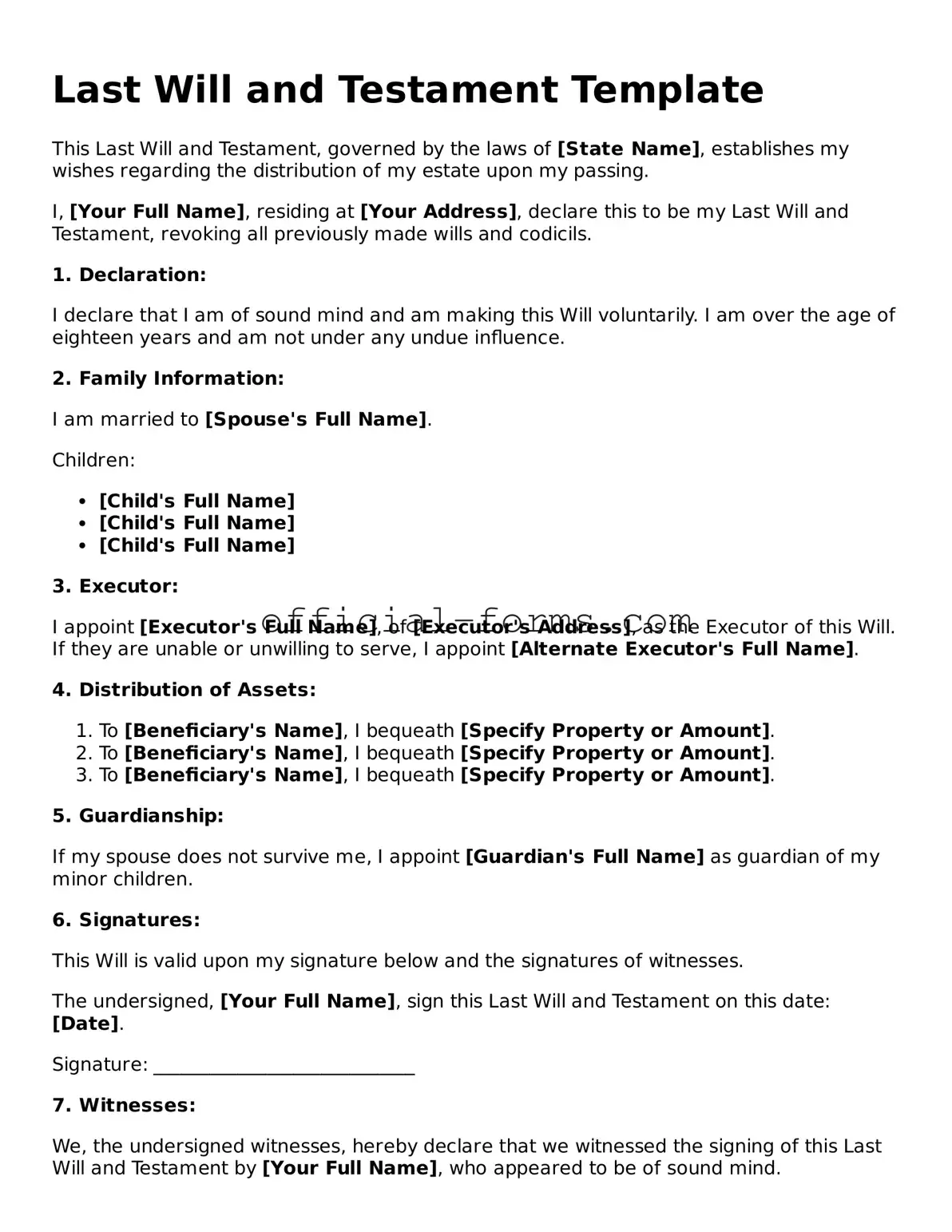Creating a Last Will and Testament is an important step in planning for the future. However, many people make mistakes while filling out the form. These errors can lead to confusion or even legal challenges down the line. Here are seven common mistakes to watch out for.
One frequent mistake is not being specific about beneficiaries. Simply naming “my children” can cause problems if you have more than one child or if you have children from different relationships. Instead, list each child by name and include their full details. This clarity helps ensure that your wishes are followed.
Another common error is failing to update the will after major life events. Changes such as marriage, divorce, or the birth of a child should prompt a review of your will. If you don’t update it, your assets may not go to the people you intend.
Some people overlook the importance of having witnesses. Most states require at least two witnesses to sign the will for it to be valid. If you don’t follow this requirement, your will could be challenged in court. Make sure your witnesses are not beneficiaries to avoid potential conflicts.
Additionally, using vague language can lead to misunderstandings. Phrases like “my personal belongings” may not clearly define what you mean. It’s better to be specific about items and their intended recipients. This helps prevent disputes among family members.
Another mistake is neglecting to sign and date the will properly. A will must be signed by you, and it should be dated to show when it was created. If it’s not signed or dated correctly, it may not hold up in court.
People often forget to consider digital assets as well. In today's world, many people own online accounts, cryptocurrencies, or digital photos. Make sure to include instructions on how these assets should be handled after your passing.
Lastly, failing to store the will in a safe place can lead to problems. If your loved ones can’t find it when needed, your wishes may not be honored. Consider giving copies to trusted family members or a legal advisor.
